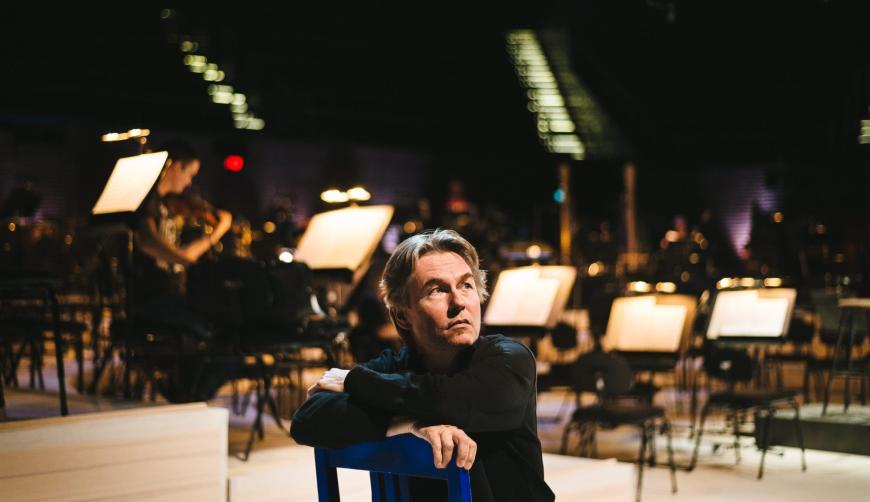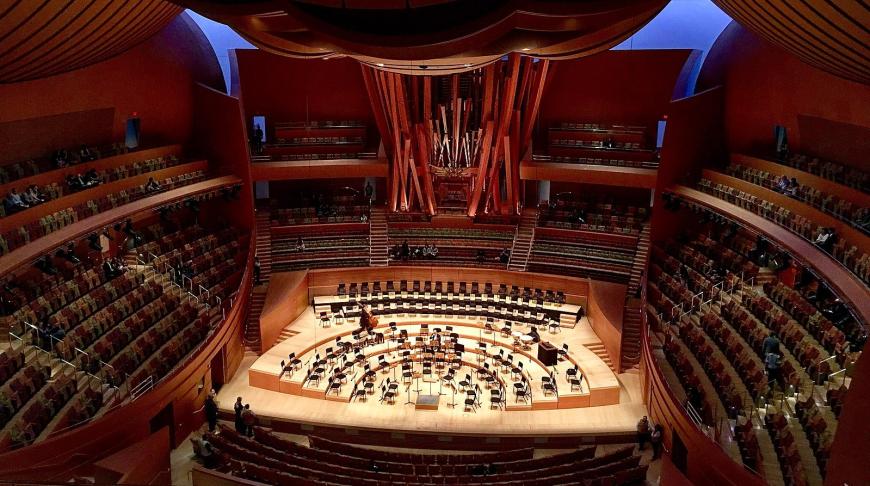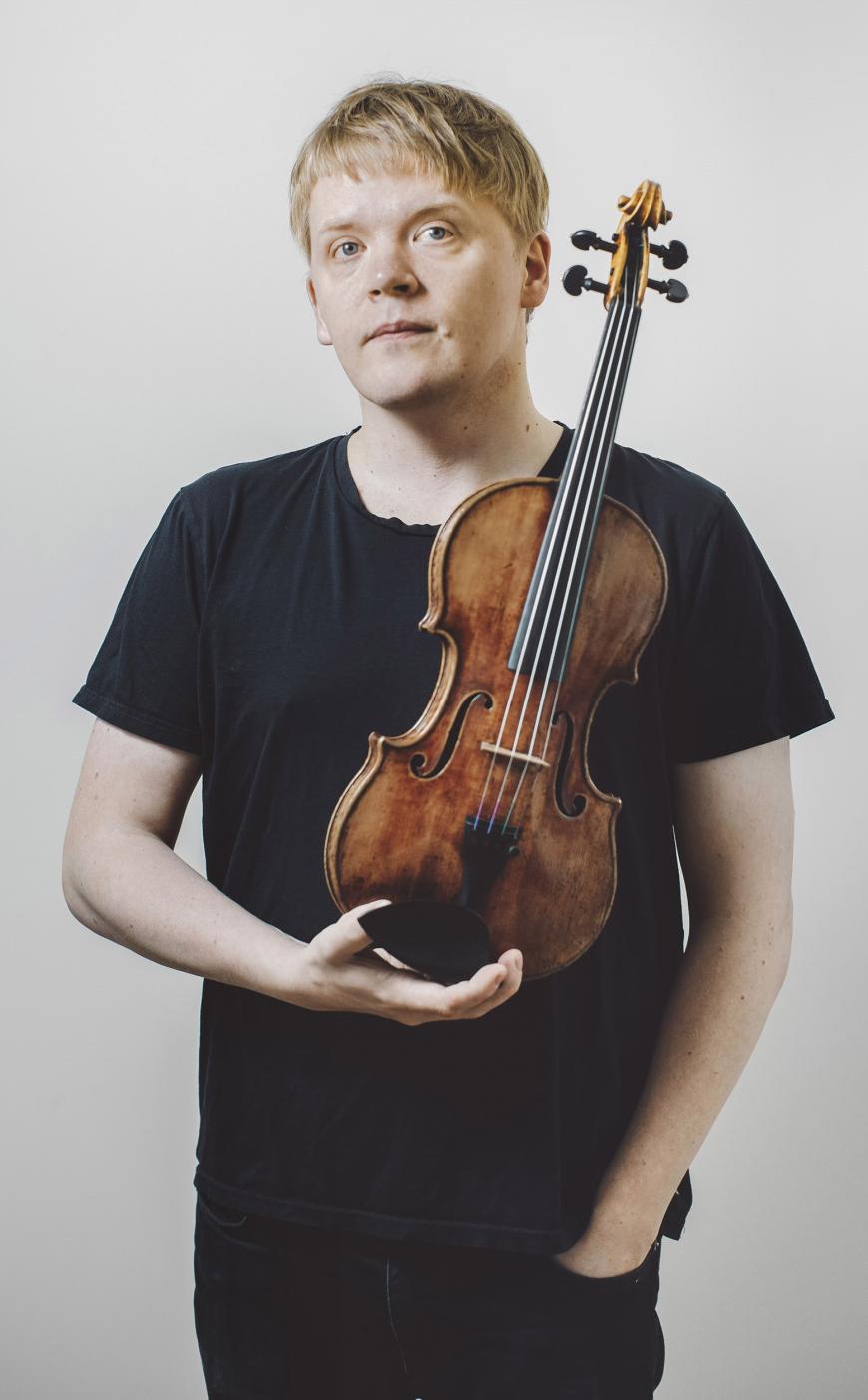
Funny thing about the number 20. Whether intentionally or not, it seems to have influenced and triggered a number of choices on the Los Angeles Philharmonic’s programs this past month.
You can start with Walt Disney Concert Hall itself, which marked its 20th anniversary in October 2023. If you follow that line of thought, the first subscription concerts of the 2023–2024 season (Oct. 6–8) featured nothing but 20th-century music, including the Heitor Villa-Lobos encore that starred the 20-something cellist Sheku Kanneh-Mason. Esa-Pekka Salonen, who was on the podium for Disney Hall’s opening concerts in 2003, was commissioned to write a piece that received its world premiere in the hall Oct. 27–29 — and guess which number he chose to base his new piece on?
Salonen calls the work Tiu, which he says is a Finnish version of an old Nordic word that means “20” and can also be translated as a synonym for that number, “score” — which doubles the resonance since, of course, a score is a piece of music. Amusingly, Salonen presents 20 chords at the beginning of the score, with 20 beats separating them at first.

Originally called Fanfare, which implies a very brief curtain-raiser, Tiu turned out to be a work for large orchestra that stretches well beyond the bounds of a chip off the workbench. It begins with a whomp and a heavy bassy tread that’s dominated by a battery of drums topped off by a huge red-orange taiko drum. They make seemingly as much noise as possible, followed by a busy episode for strings, trumpets, winds, and mallet percussion that dissolves into a cloud of weighty murk.
There are palindromes upon palindromes — the 20 chords played forward and in reverse order, sections that slow down symmetrically matched with others that speed up. Three trumpeters eventually sound off from the left, center, and right orchestra-view levels, and in the end, everything fades into something resembling serenity.
While it would have been fun for statisticians if Salonen managed to keep Tiu going for 20 minutes, the music stopped seven and a half minutes short of that figure. But we’ll take it; the engaging, colorfully scored Tiu doesn’t wear out its welcome.

Salonen the adventurous programmer then shrank the ensemble down to 17 string players in order to give two of his collaborative partners at the San Francisco Symphony, violinist Pekka Kuusisto and composer Nico Muhly, a shot at Shrink, the violin concerto that Muhly wrote in 2019 for Kuusisto. The violinist had previously performed the piece at Disney Hall in April 2022.
Like Tiu, Shrink is a process piece, but with intervals dictating the shape of the journey. The first movement is labeled “Ninths,” the second is “Sixths,” and the third, “Turns,” is described as “a tiny set of anxious intervals between unisons and fourths.” To this listener, it’s a more or less conventionally structured thing, a fast-slow-fast violin concerto hovering pleasantly and unsentimentally between the poles of spiky neoclassicism and meditative stasis, with a perpetual-motion cadenza that links the second and third movements without pause. As an encore on Sunday, Kuusisto played a solo improvisation that sounded like a folk-song mash-up flecked with the occasional quarter tone.
Besides two collaborative partners, Salonen also brought to his old orchestra something he had conducted in San Francisco a month before — Richard Strauss’s An Alpine Symphony, a sonic spectacular that would test the limits of how much volume Disney Hall could take. Well, in the first half, even these acoustically revealing Douglas fir-lined walls couldn’t quite sort out Strauss’s scoring at its thickest; the louder sections sounded distorted to my ears, like clipping on an audio system. Oddly enough, the hall was able to contain the loudest portion of the piece — the sensationally graphic thunderstorm sequence — and the final salvo of that weather event was a stunner, with two timpanists and a bass drummer hammering like mad. And just as impressive, in its own quiet way, was the coda, done quite slowly with lingering impact.




